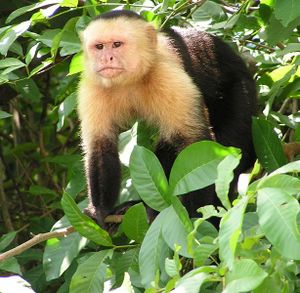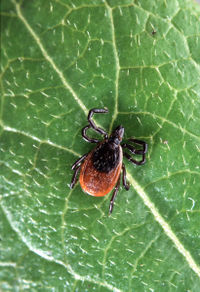Resting Racehorses

Your humble reporter lives on a horse farm, and many of our equine friends compete on a regular basis, so we are always interested in anything to keep them fit, healthy and happy.
I was interested to see a report of some research done in Finland. The main carbohydrate store in muscle is called glycogen, and Seppo Hyyppä, from MTT Agrifood Research Finland, looked at the way in which muscle glycogen stores are rebuilt after exercise. This is an important question, and not only for horses: glycogen is the most important nutrient during exercise and if glycogen stores are depleted the horse breaks down the protein in its own muscles to provide energy. So if the horse is chronically over-exercised it can hurt him.
The two most important factors in rebuilding muscle glycogen were:
- Sufficient recovery time between intense training periods, and
- Hydration
Giving horses an isotonic glucose-electrolyte rehydration solution soon after exercise helps to overcome dehydration significantly better than providing them with plain water.
The research also showed that weighing the horse before and after exercise gave a reasonably accurate estimate of the rate at which glycogen was being replenished. If you don’t have a set of weighing scales handy, you can measure the horse’s chest circumference.
The research also confirmed what every horse owner knows: you can tell a lot by looking at a horse: his general alertness and, for example, suppleness and appetite, indicate that he is in good condition.
“A canter is the cure for every evil.”
–Benjamin Disraeli, 1st Earl of Beaconsfield (English Statesman, Novelist and, in 1868 and from 1874-1880, British Prime Minister, 1804-1881)
“A man on a horse is spiritually as well as physically bigger than a man on foot.”
–John Steinbeck (American Writer and, in 1962, Winner of the Nobel Prize in Literature, 1902-1968)
Low Testosterone May Shrink Your… Brain

It is almost forty years since Fernando Nottebohm first began to describe some of the dynamic changes that occur in the brains of songbirds as the seasons change. Every year some regions of the brain grow in response to changes in ambient light levels and others regress. There are marked seasonal changes in the brains of fish, reptiles, amphibians, birds and even some mammals such as gerbils, mice and perhaps even in humans. But the magnitude of the changes in birds far outweighs any other species. It is hoped that that understanding the mechanism controlling that change may help us to develop treatments for age-related degenerative diseases of the brain such as Parkinson’s and dementia.
Researchers from the University of Washington and the University of California, Berkeley, have published some interesting new data in the Proceedings of the National Academy of Sciences. They report a striking shrinkage in the size of the brain regions that control singing behavior of Gambel’s white-crowned sparrows. This transformation is triggered by the withdrawal of testosterone and can be seen within 12 hours. The study is the first to report such rapid regression of brain nuclei caused by the withdrawal of a hormone and a change in daylight conditions in adult animals.
The research protocol was designed to mimic the natural seasonal changes that occur in the brains of the sparrows. Their song-control regions expand in the spring and summer leading up to the breeding season, as they use songs to establish territories and attract mates in Alaska. Later in the summer, as the birds get ready to migrate back to California, the same brain regions shrink.
To better understand what happens in the sparrows’ brain, the researchers received federal and state permits to capture 25 of the migrating male birds in Eastern Washington. They then housed the birds for 12 weeks before exposing them to 20 days of long-day conditions comparable to the natural lighting the sparrows would experience in Alaska during the breeding season. The birds were also implanted with testosterone.
At the end of 20 days, six of the birds were euthanized and the remaining 19 were castrated and testosterone implants were removed so there would not be any circulating testosterone in their systems. After 12 hours five more birds were euthanized and the remainder were euthanized at 2, 4, 7 and 20 days.
The researchers found that the size of the high vocal center (HVC) region decreased 22 percent within 12 hours after the withdrawal of testosterone and that the number of neurons in this song-control region fell by 26 percent after four days. In addition, the size of two other song-control regions called Area X and the RA significantly regressed after 7 and 20 days.
Much as I dislike animal experiments of any kind, it is invaluable to have an animal model system in which we can observe predictable neurodegeneration. As men age, circulating levels of testosterone decrease, and other research has shown that this decline may contribute to cognitive impairment.
This is an important new approach to understanding the interplay between nerve cell degeneration and hormones.
Sex, Handedness and the Brain

I have commented before on my longstanding interest in handedness and laterality, as well as gender differences in the brain. A recurrent question when we look at both of them is whether culture has any role in the development of either. Are some of the differences in male and female brains driven by educational opportunities and cultural expectations, or is there something innate about them?
A recently published paper in PLoS ONE reports finding both sex and handedness influences on the relative size of the corpus callosum in Capuchin monkeys.
Capuchin monkeys are playful, inquisitive primates best known as the “Organ Grinder” monkeys. They have great manual dexterity, complex social behavior, and cognitive abilities. The new research now shows that just like humans, they display a fundamental sex difference in the organization of the brain, specifically in the corpus callosum, the band of white matter that connects the two hemispheres of the brain.
In the study, thirteen adult capuchins underwent magnetic resonance imaging of the brain to determine the size of their corpus callosum. The monkeys were later given a task to determine hand preference. The authors’ results led them to conclude that, as in humans, male capuchins have a smaller relative size of the corpus callosum than females, and right-handed individuals have a smaller relative size of the corpus callosum than left-handed individuals.
As the two hemispheres show greater independence of function, the relative size of the corpus callosum is expected to be smaller. This has been documented in humans, and same pattern was found in capuchins.
This finding may be related to hemispheric specialization for complex foraging tasks that require the integration of motor actions and visuospatial information. In the wild, capuchin monkeys live in trees as well as on the ground, and they are known to be very good at capturing small swift prey such as birds, lizards, and squirrels.
Sex Makes You Fat
Shortly after the earth cooled, I was given a book with the arresting title of the Dieter’s Guide to Weight Loss During Sex.
I have no idea why. Nothing in the title seemed at all relevant to me.
So now I learn that sex makes you fat.
But only if you’re a female tick.

I would like to share with you that after mating, the weight of the female African ixodid tick balloons until she is 100 times her original size. That is truley astonishing.
This observation has lead a researcher from the Department of Biological Sciences at the University of Alberta to investigate what it is about copulation that triggers such a massive weight gain.
In a new paper published in the Journal of Insect Physiology, Dr. Reuben Kaufman suggests that there are several differences between the ixodid tick and other blood-sucking beasties – mosquitoes, tsetse flies, bedbugs and kissing bugs – that may help explain the weight gain. None of them has anything like this kind of weight gain: it seems to be unique to the female African tick.
Kaufman suggests that the ixodid tick displays a significant difference in lifestyle from the other insects and that it is adaptive for the virgin to remain small before mating: she wants to stay below the host’s radar.
This species of tick remains on the host for a number of days, rather than minutes. As Kaufman says,
“In this family of ticks, mating takes place on the host. Most other insects mate before or after their brief blood meal – the two acts are totally separate, but not with these ticks.”
Female ticks require six to 10 days to engorge fully. First, she attaches herself to the skin. Then she feeds to 10 times her unfed weight and finally, after copulation, she increases her weight a further tenfold.
On the other hand, the virgin tick rarely exceeds the critical weight necessary for laying eggs. She will hang on to the host for weeks waiting for a male to find her. If the virgin gains too much weight and is groomed off the host, she will not be able to reattach herself to another host and continue feeding. If she remains small she still has a chance to reattach itself to another host, which hopefully will be infested with some feeding males. Then she cannot only continue feeding, but may also have the chance of meeting a mate.
As Kaufman says,
“If a male eventually copulates with her, she will engorge normally and then be able to lay eggs. This is one reason why it might be adaptive for the virgin to remain small until mated.”
In terms of what causes the female to become so engorged, it seems to have something to do with the exchange of bodily fluids. The male fluids contain two engorgement factor proteins that together act as a signal to tell her to complete engorgement.
This work may sound as if it is a bit out of left field, but it is actually very important. Ticks can be a real problem in many parts of the world: even in Georgia, it is a daily ritual to check the dog, cats and horses for ticks.
This work is part of a research program to produce an anti-tick vaccine. Some experiments have already suggested that normal, mated ticks are unable to fully engorge when feeding on a host that has been immunized against the engorgement factor proteins. If these observations can be confirmed and extended, an effective anti-tick vaccine to protect livestock and pets could be on the horizon.
Dogs, Infants and Imitation

Human beings have a remarkable ability to be able to understand the goals and intentions of others. This ability develops gradually during infancy and early childhood and is known as the theory of mind. This ability seems often to go wrong in people with autism spectrum disorders and schizophrenia. Psychologists have tended to think that this is a purely human ability, yet every one who spends a lot of time with animals is sure that they have a similar ability.
New research from the University of Vienna and the University of Budapest, have found striking similarities between humans and dogs in the way they imitate the actions of others.
The researchers were examining a phenomenon known as “selective imitation.” Dogs were given the task of opening a food container by pulling a rod. Normally dogs prefer to use their mouths for this kind of task, but a female dog was trained to open the box with her paw. When the other dogs watched how she did it, they imitated her to get the food. But the dogs only imitated selectively.
When the “training dog” used her paw while holding a ball in her mouth, they used their mouths instead of their paws for manipulating the rod. But when the demonstrating dog’s mouth was free, the dogs once again imitated her and used their paws. This implies that they assumed that she was only using her paw because her mouth was otherwise occupied.
It also indicates that dogs are like human infants in that they do not simply copy an action that they observe, but they adjust the extent to which they imitate depending on the situation. Neither dogs nor humans blindly copy what another creature is doing: they copy what is appropriate for the task at hand. The research has just appeared online in the journal Current Biology.
After their millennia of association with humans, dogs may be a special case. But I doubt it: this is yet more evidence that the gap between animals and humans is shrinking much more rapidly than many of us realize.
The Song of the Whales

I suppose that it has something to do when I grew up, but I’ve always been fascinated by animal communications in general and the amazing songs of the whales in general.
A few years ago I was speaking at a conference in Maui, and I stopped speaking and took the assembled throng outside because some migrating whales were coming in very close to shore. Our wait as not in vain: I saw something that I’d only ever seen on documentaries: two adult whales and their calf leaping out of the water in harmony. Later that day someone took me out beyond the surf and had me swim underwater. The whale song was crystal clear, even though some of the whales were now miles away.
A few months ago I wrote about the data suggesting that dolphins call each other by name. Web Mistress Carol has just sent me a report of some research that was published in January by a group from the Scripps Institute of Oceanography in the journal Marine Ecology Progress Series.
The scientists used harmless tags suctioned to the whales’ bodies, to track the whales and found that as they feed they send out calls to let each other know where they are. Each group employs a different sound.
The noises play a similarly important role during mating season when males sing long, low-pitched songs to indicate their reproductive fitness to females. Females select mates based on size and estimate that by evaluating males’ songs: Larger males can take in more air and hold notes longer.
A related study, also by Scripps researchers, found that there are distinct “dialects” of whale-speak in different regions of the ocean.
The scientists used acoustic recordings to delineate nine population regions worldwide. They found the whales weren’t evenly distributed, though: Populations using a “Type 1” call, for example, live within a narrow band of ocean hugging the North American coast, while whales that use a “Type 4” call are spread over a large swath of the Northern Pacific Ocean.
The second study was published in a recent issue of the Journal of Cetacean Research Management.
The scientists say the dialect findings could help guide conservation efforts for blue whales, whose numbers dwindled to dangerously low levels before whaling moratoria were enacted: There were once an estimated 200,000 to 300,000 in the Southern Hemisphere, but today that number is closer to 1,000.
Here is a terrific video (just bear with the commercial at the beginning) and an audio file of whale song: Audio: Hear Whales Sing
I would also like to pay tribute to the Scripps Institute for making the entire article open access.
Of Horses and Hearts

I live on a horse farm, so I see the interactions between horses and between horses and humans almost every day. Horses are extraordinarily sensitive creatures with their own sets of emotions and highly developed sense of propriety. They are also very good barometers for the emotional states of humans. We could not work out why one of the horses at another farm was consistently bratty with one particular rider, until we discovered that she was high on ecstasy. Her “energy” was a mess and it totally confused the horse.
On the other hand, horses are often used therapeutically with emotionally and mentally ill and handicapped children and adults. My old horse – Mr. Black – was a perfect therapy horse: nothing ever fazed him.
There is now some more research demonstrating one of the possible mechanisms by which horses may be able to pick up on a rider’s emotional states.
I have a couple of times mentioned some of the work being done at the Institute of HeartMath in California.
Some of their work is controversial, but most has been quite convincing.
I have for several years now been interested in the phenomenon of Heart Rate Variability (HRV). As the name implies, it is a measurement of the beat-to-beat variation in the heart’s rate. Alteration (primarily reductions) of HRV has been reported to be associated with various pathologic conditions like hypertension, hemorrhagic shock, and septic shock. It has found its role as a predictor of mortality after an acute myocardial infarction. It may also be disturbed in major depressive disorder.
I knew about it from the days that I worked at the National Heart Hospital in London, but Roger Callahan – the discover of Thought Field Therapy (TFT) – has been able to show that TFT is one of the few therapies that can normalize it. We also discussed it in the context of the vagal nerve and compassion.
From a pilot study by the Institute and Dr. Ellen Gehrke from Alliant University it appears that a horse’s heart rhythms reflect their emotional state and can respond to the emotional state of a nearby human. When in contact, a horse’s heart rate may mirror a human’s emotions, implying a close unspoken form of communication between the two.
The study took place at Dr. Gehrke’s ranch in San Diego, where electrocardiogram (ECG) recorders were placed on her and also on four of her horses. All five were monitored during a 24-hour period in which the horses were under a variety of normal conditions and activities such as eating, grooming or being alone. Measurements were also done while they were being ridden and accompanied by Dr. Gehrke.
The ECG recorders projected increased coherent HRV patterns for the horses during times of close, calm contact between them and Dr. Gehrke. Coherent HRV patterns have been shown to be the result of positive emotions and facilitate brain function.
Dr. Gehrke said, “Horses receive information from body language and give feedback. They don’t think very much, they feel. They are very emotional and honest. They also have a powerful impact on your sense of self and ability to lead.”
I don’t think that cardiac coherence is the whole story. They also respond to micro-movements – small movements of the legs, arms and trunk that are all but imperceptible to humans – and we have seen many of them sense events at long range. I travel a great deal and come home at odd times. But several witnesses saw Mr. Black start to become very excited 20-30 minutes before I would arrive home. In England, Rupert Sheldrake has amassed a considerable body of evidence to support those observations.
Nonetheless, this is very important research and I shall be very interested to see the final version once it has been subject to peer review.
“There is something about the outside of a horse that is good for the inside of a man.”
–Sir Winston Churchill (English Statesman, British Prime Minister, 1940-1945 and 1951-1955, and, in 1953, Winner of the Nobel Prize in Literature, 1874-1965)
“A man on a horse is spiritually as well as physically bigger than a man on foot.”
–John Steinbeck (American Writer and, in 1962, Winner of the Nobel Prize in Literature, 1902-1968)
“Wherever man has left his footprint in the long ascent from barbarism to civilization we will find the hoofprint of the horse beside it.”
–John Moore (American Man of Letters and Former Archivist and Librarian for the State of Tennessee, 1858-1929)
“I’d rather have a goddam horse. A horse is at least human, for God’s sake.”
–J.D. Salinger (American Writer, Student of Advaita Vedanta and Recluse, 1919-)
And finally:
“In my opinion, a horse is the animal to have. Eleven-hundred pounds of raw muscle, power, grace, and sweat between your legs – it’s something you just can’t get from a pet hamster!”
–Unknown Author
Dogs, Diet Pills and Healthy Eating

Pfizer Animal Health announced today that the Food and Drug Administration (FDA) has approved Slentrol(TM) (dirlotapide) for the safe and effective management of canine obesity, making it the first and only veterinary-approved obesity drug for dogs in the United States.
Because of our intense interest in metabolism, we have been tracking the rise in canine obesity since 2001. Wild dogs do not get fat, but under-exercised canines given the wrong food rapidly do. Many owners think that they are too busy to exercise them and many neighborhoods either have no side walks or are simply not safe for a walk. Having just received multiple bags and boxes of food, I can also attest to something else: we often equate food with love – without being aware of the potential adverse health consequences.
According to 2002 data from the American Veterinary Medical Association 40 percent of dogs – around 17 million – are considered overweight (5 percent to 20 percent over ideal weight) or obese (20 percent or more over ideal weight).
Depending on the species, our canine friends get many of the same problems that we associate with overweight in humans: arthritis, heart disease, respiratory conditions and some cancers. Obesity can also worsen the signs associated with pre-existing diseases such as osteoarthritis. In addition, obesity can affect a dog’s quality of life by making exercise and play more difficult or even impossible.
The medicine is, quite rightly, designed to be used with a diet and exercise plan.
This new medicine does appear to be a real advance, and its mode of action very interesting. Indeed I am at this moment looking at a dog who might benefit!
But I also notice that a number of news outlets have reproduced the Pfizer press release verbatim, and presented it as a news item.
What Pfizer said is 100% accurate, but when the media reporduce something without comment I worry that this is an example of “fake news.“
It is interesting to me that this story was released two days after the release of a report from researchers at the University of Alberta Hospital that has just been published in the Lancet.
Their conclusion? That we need better data on the long-term effects of anti-obesity drugs before more widespread use of the therapies. We need to know not just if a medicine leads to weight loss, but whether it leads to clinical benefit. We saw this with the recent tragedy with the medicine torcetrapib. This was a medicine designed to increase levels of HDL-( “good”) cholesterol. Indeed it does, but more people taking it died in a clinical trial, which was then stopped.
I am often asked, “Wouldn’t it be great if we could do anything that we wanted and then to take a pill to cancel out the effects?”
The answer to that one is surely a big, “No!”
Fortunately such a solution – which would destroy personal responsibility – seems to be years in the future.
If ever.
We MUST take responsibility for the things that we do.
To do anything less is to accept the fantasy that we are no more than machines at the mercy of our brain cells.
We are all far more than that.
And deep down we all know it.
Lassie and the Shepherd
On the same day that I read some research purporting to show that dogs aren’t much good at sounding the alarm if a human is in trouble, I also read about a Scottish shepherd who collapsed after having a stroke while herding his flock. His two sheepdogs, Border Collies – surely the smartest dogs in the world – kept him warm overnight as he lay in a field. The following morning he was found by helicopter rescuers after one of the dogs ran around trying to catch their attention.
The research ended by saying that Lassie would probably have left Jimmy in the well.
But I’m not so sure. When I’m not traveling, I’m around animals all day long. They all have their personalities: they have their favorite other animals, their favorite – and least favorite – humans, as well as a clear sense of propriety. If one of the clan gets attention, then they all expect equal amounts of talking to, petting and generally being made a fuss over. They are all very good barometers of the character of the people whom they meet.
Some people come to the house and the dog and the cats are all over them like a nasty rash. With others they keep their distance or avoid them altogether.
If they like you they will do anything for you in their own feline, canine or equine ways. If you are not on their most favored humans list, they probably wouldn’t cross the road to spit on you if you were on fire.
I don’t see any evidence in the research that the dogs’ subjective feelings were taken into account.
It’s a safe bet that the Scottish shepherd loved those dogs like his own children and they probably reciprocated. You have to fabricate some really creative explanations as to why two dogs would stay out in the perishing cold with their human when they could have just taken off and found themselves a warm place for the night.
And as for my comment about the intelligence of Border Collies? You may have heard the jokes about how many dogs it takes to change a light bulb:
Golden Retriever:
The sun is shining, the day is young, we’ve got our whole lives ahead of us, and you’re inside worrying about a stupid burned out bulb?
Poodle: I’ll just blow in the Border Collie’s ear and he’ll do it. By the time he finishes rewiring the house, my nails will be dry.
Border Collie: Just me. And while I’m here I’ll make sure that your entire wiring is up to code.
Monkey See, Monkey Do
This is the title of a short article on mirror neurons in New Scientist.
Pier Ferrari at the University of Parma, Italy, and colleagues tested 21 newborn Macaques by holding each in front of a researcher who made various facial expressions.
The article has links to two movie clips showing the young Macaques beginning to imitate the researcher.
The study indicates that the capacity for imitation occurred earlier in the primate evolutionary tree than previously thought, and before the rhesus monkey ancestor split from the human lineage, about 25 million years ago.
Yet another apparently characteristic that was thought to be uniquely human, that was then found to be shared by young apes, and is now shown to be an even more general attribute of sentient creatures.
We have recently been doing some informal expriements with a kitten and an older cat that seem to have remarkable powers of mimicry. Not at the same level as the Macaques, but still mimicking head position and mouth opening. I cannot find any published research on mimickery in cats, but I shall ask around and report back.






